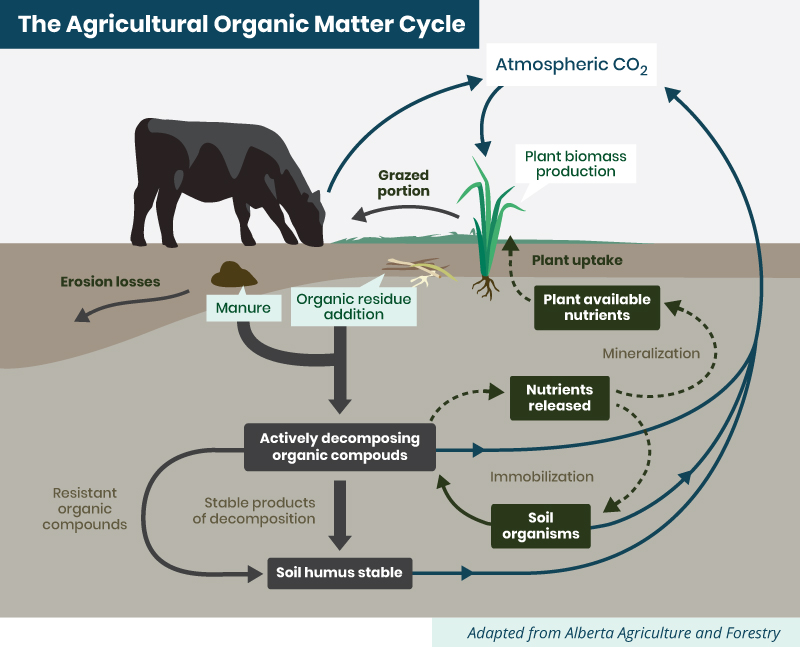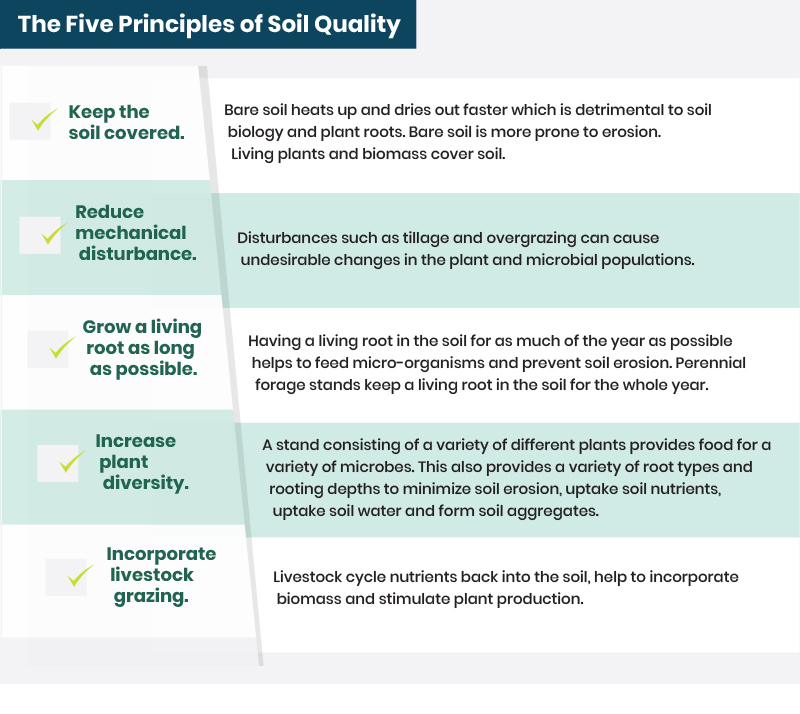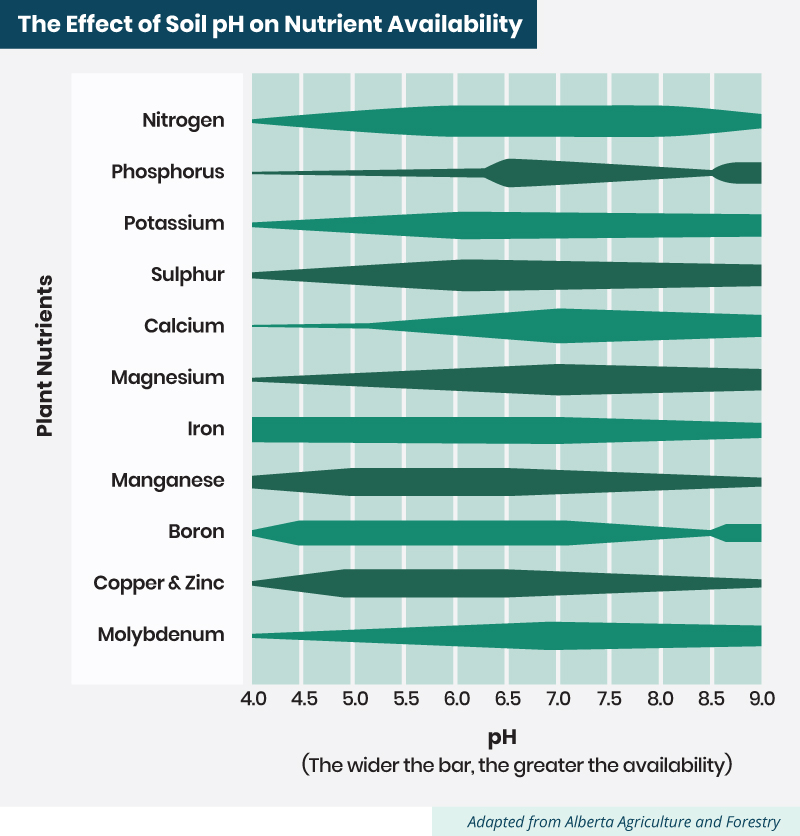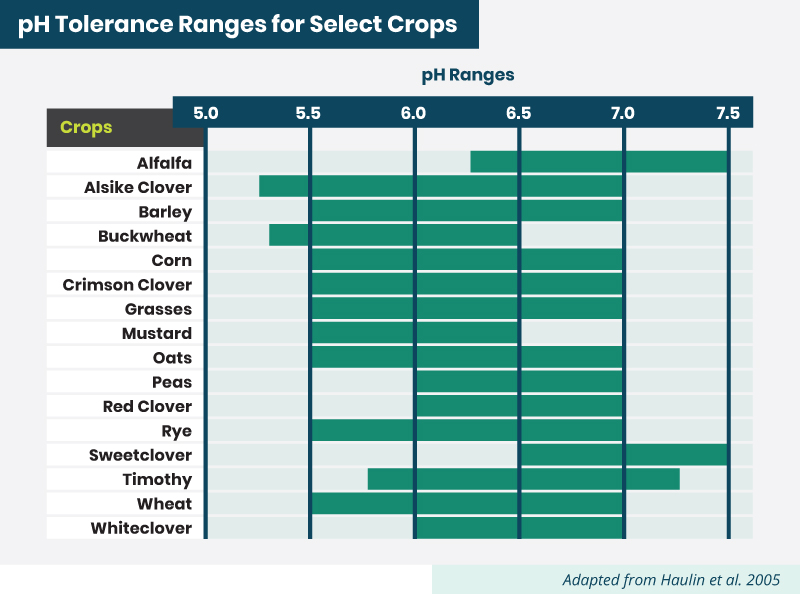Managing Pasture Soils
On This Page
SOIL FUNCTION
SOIL MANAGEMENT CHALLENGES
This module explores the function of soil in a pasture environment and outlines common challenges of soil management.
Soil Function
Key Points:
- Soil organic matter acts as a ‘revolving nutrient bank account.’
- Soil organic matter increases water infiltration, improves soil structure and reduces erosion.
- Soil texture impacts water infiltration, nutrient leaching risk, soil aggregation, erosion risk and water holding capacity.
- Coarse (sandy) soils are fragile and are at risk of erosion. Fine (clay) soils are at risk of compaction.
- Active soil biology helps to cycle nutrients and make them available to plants.
- Use the Guide to Soil Sampling and the Soil Management worksheet in the Toolkit to help you identify any soil concerns and plan any appropriate pasture soil remediation required.
- What is soil organic matter?
-
Soil Aggregate – a group of soil particles that bind together. The space between aggregates provides space in the soil for air and water.
Soil organic matter is the fraction of the soil that consists of plant and animal tissue in various stages of decomposition. It is very porous and allows for quick water infiltration. Soil organic matter also enhances soil aggregate stability, which improves soil structure, reduces erosion, and increases water infiltration.
Soil organic matter can be described as a ‘revolving nutrient bank account.’ Nutrients from dead plant material and manure are ‘deposited’ onto and in the soil. As this organic matter decomposes, nutrients are released or ‘banked’ in the soil to be used by plants.
Soil organic matter increases a soil’s water holding capacity and water infiltration because it acts like a sponge. This means that management practices that increase soil organic matter which improves soil structure will be beneficial regardless of soil texture.
- Why does soil texture matter?
-
The inorganic component of soil is made up of sand, silt and clay. A soil primarily consisting of sand is considered coarse textured and one containing mostly clay is fine textured. The texture of soil impacts water infiltration, nutrient leaching risk, soil aggregation, erosion risk and water holding capacity. A soil that has a coarse texture (sandy) tends to have a higher rate of infiltration due to the larger pore spaces. However, it is a more fragile soil that tends to form instable soil aggregates, making it more susceptible to erosion. The large pore spaces between soil particles and lack of stable aggregation reduces the water holding capacity of these soils and increases the risk of nutrients leaching out of the soil.
The pore spaces between clay particles are small but numerous, meaning water infiltration rates are slower, but the overall water holding capacity of the soil is higher than in more coarsely textured soils. Clay particles form soil aggregates that are more resistant to physical disturbance. However, clay soils are more vulnerable to compaction, which can reduce infiltration rates and increase runoff.
- What is soil biology?
-
Soil biology refers to the living organisms found in soil. It is estimated that 95% of all living species are found in the soil, including earthworms, nematodes, and single celled organisms. Soil biology is important to soil function. For example, organisms like earthworms and soil bacteria decompose dead plant material and cycle organic material into plant available nutrients. Mycorrhizal fungi form symbiotic relationships with plants, and when well adapted to the plant species and environment, can act as plant root extensions increasing water and nutrient absorption by the plant. Soil biology is responsible for the decomposition of plant residues. Retaining an adequate covering of plant residue on the soil surface provides habitat, protection and food for the soil biology as well as protecting the soil from the elements including high temperatures and wind and water erosion.
Biodiversity thrives in environments with lower disturbance, so perennial pastures and fields managed under reduced tillage practices tend to have increased levels of soil biodiversity. In general, increased biodiversity aboveground leads to increased biodiversity belowground. Therefore, perennial pastures with many different plant species that are home to a variety of wildlife and insects tend to have increased levels of soil biodiversity. Increased levels of soil biodiversity may contribute to increased soil fertility, nutrient cycling and storage, greater crop yields, more stable soil aggregates, improved soil structure, and long-term soil productivity.
- How does organic matter cycle?
-
Carbon from the atmosphere is utilized by plants for photosynthesis. When organic matter from plant residues or manure are added to the soil, bacteria in the soil decompose these residues, releasing nutrients that are then used by actively growing plants.

- How does the carbon to nitrogen ratio of plants affect nutrient
cycling and organic matter? -
For a plant to be able to use nitrogen from old plant residues, the residue must first be decomposed.The carbon to nitrogen ratio (C:N) in soils and residues has a significant impact on decomposition and nutrient release. The C:N ratio in soils is generally about 10:1. Adding organic residues to the soil, such as dead plant material or manure, changes the C:N ratio. Decomposition is slowed when the C:N ratio is high (greater than 30:1), and rapid when it is low (less than 20:1). Generally, nitrogen is released when C:N is less than 20:1, and nitrogen is immobilized in the soil when C:N is greater than 30:1.
Soil Management Challenges
Key Points:
- Soil salinity negatively affects yield potential and can cause nutrient imbalances
- Plants vary in their tolerance to pH levels, but most thrive in pH range of 6.5 to 7. High and low pH both negatively affect the availability of nutrients for plants.
- The most effective way to minimize erosion is to maintain living roots in, and cover or litter on, the soil.
- If tillage is necessary, work the land in the spring rather than fall to reduce erosion risk from spring run off.
- Soil compaction restricts plant root growth, along with nutrient and water uptake.
- To avoid the risk of compaction, avoid grazing pastures when soils are very wet.
- A soil test will help to identify any potential soil concerns, such as salinity or acidity.
- Use the Guide to Soil Sampling and the Soil Management worksheet in the Toolkit to help you identify any soil concerns and plan any appropriate pasture soil remediation required.
Soil quality can be impacted by many factors. There are five general principles recognized by several conservation and grazing organizations as beneficial to maintaining or improving soil quality.

For more information on soil quality, visit the website for the USDA’s Natural Resource and Conservation Service
- How does salinity affect soils?
-
Soil salinity refers to soils that contain high concentrations of soluble salts in the surface soil layers. Excess salt impairs the ability of plants to efficiently absorb water and nutrients from the soil. Plants must use more energy to maintain an inward flow of water and nutrients into their roots in saline soils meaning that less energy is available for plant growth. It is estimated that at least five million acres in western Canada are affected by salinity to some degree.
When salinity is present, it is usually in one of two forms:
- dryland salinity
- irrigation salinity
Dryland salinity is caused by groundwater redistributing salts and accumulating these salts at the soil surface. When groundwater flows from upland to lowland areas, it accumulates salts and raises the water table in the lowlands. When the water table rises to within two metres of the soil surface, capillary action pulls the groundwater to the soil surface. As that water evaporates, salts accumulate in the root zone and topsoil.
Irrigation salinity occurs when the salts from irrigation water are not sufficiently leached from the root zone.
Salinity negatively affects yield potential and can cause nutrient imbalances. Saline soils are also typically alkaline (high pH) which also negatively impacts nutrient availability.
Saline soils are difficult to remediate but some plants are better adapted to growing in these conditions. Forage species such as Altai wildrye, wheat grasses, sweet clover and alfalfa are saline tolerant. Forage breeders are also improving on current saline tolerant varieties such as AC Saltlander, Halo II, and AC Bridgeview. Species such as red clover and timothy have a low salinity tolerance and should be avoided in forage mixes for saline soils. As a rule of thumb, plants that have low drought tolerance also have low salinity tolerance. Forage U-Pick can help you find forage species that are well adapted to saline conditions.
- How does pH affect soils?
-
Plants differ in their tolerance to soil pH conditions, but most thrive in a pH range of pH 6.5 to 7. A neutral soil has a pH of 7. A soil is considered acidic if the pH is lower than 6 and basic or alkaline if the pH is greater than 7. The pH of the soil affects nutrient cycling and uptake as microorganisms that are responsible for decomposition of organic matter in the soil are sensitive to large shifts in pH. Soil pH can also affect the solubility of nutrients. Under acidic or alkaline pH conditions, some nutrients will become less available to plants. Nodulation, the symbiotic relationship that legumes form with rhizobia bacteria to fix nitrogen, is also negatively impacted by low (acidic) soil pH conditions, resulting in a reduced capability of legumes to fix nitrogen. In Alberta alone, it is estimated that there are over one million acres of strongly acidic and four and half million acres of moderately acidic soils, primarily in the grey wooded soil zone, Milk River, and Cypress Hills areas.
The figure below demonstrates how different nutrients are impacted by soil pH, where the width of the bar represents the nutrient availability.

Forage crops differ in acidity tolerance. If acidity is a problem in a field, this should be taken into consideration when selecting forage species. Applying lime to soils can neutralize excess acidity. Forage U-Pick can help you select forage species that are acid tolerant beyond those represented in the following graphic.

For more information on species selection, visit the Selecting Forage Species module.
- How can erosion be minimized?
-
Soil erosion is a major cause of soil degradation as it causes a loss of topsoil and soil organic matter. Topsoil is the most nutrient rich and necessary for a healthy pasture. The most effective way to minimize erosion is to maintain living roots in the soil and to keep a layer of cover (litter) on the soil. Exposed soil without roots to hold it in place is vulnerable to erosion.
The highest risk time period for water erosion is during spring runoff, so fields that are tilled in the fall and do not have ground cover in the spring are more susceptible. Keeping the land in perennial forages and using zero till seeding methods when reseeding are examples of best management practices to minimize erosion risk. If an area has a high risk of erosion, it may be necessary to fence it and limit grazing in this area.
- How does soil compaction impact pasture productivity?
-
Soil compaction is the compression of soil particles, which reduces the soil pore space. Pore space is filled with air and water. Soil compaction impacts pasture productivity in a few ways:
- When pore space is reduced, the water holding capacity of the soil is negatively impacted and the pasture is more susceptible to drought conditions.
- When water infiltration is reduced, runoff and ponding increase after a rain event or in the spring with snow melt. This increases the risk of erosion.
- Soil compaction limits root growth, which in turn limits the nutrient and water uptake of plants. This negatively impacts pasture growth and productivity.
Soils that have a heavier texture (more clay) are generally more susceptible to compaction than lighter textured soils (more sand).
Soil compaction can be mitigated in several ways:
- Pastures with a diverse mix of forage species may be less susceptible to compaction when compared to overgrazed pastures. Soil compaction can be reduced by growing a mix of forage species with both tap and fibrous root systems. Tap-rooted plants can break through layers of compaction, while fibrous rooted plants can increase the organic matter of the soil, which may also help reduce compaction.
- Limiting access to pastures during wet conditions can reduce the risk of compaction, as soils are most susceptible to compaction when waterlogged.
- For severe cases of subsoil compaction, mechanical remediation may be needed. Subsoiling is used to fracture the hard pan or plow layer of compaction in the subsoil so that plant roots are better able to penetrate the hard pan.
Investigation of how management practices, including different grazing management strategies, can improve soil quality and what impacts these practices may have on soil biology are a focus of continued research and innovation. Our knowledge in this area is evolving rapidly, so continue to follow organizations such as the Beef Cattle Research Council, provincial government agriculture departments, industry associations, and local forage and livestock associations for future updates.
Test your knowledge
Information adapted from:
- What Makes Soil Healthy?
Beef Cattle Research Council - Soil Organic Matter
Alberta Agriculture and Forestry PDF - Nutrient Management Planning Guide
Alberta Agriculture and Forestry PDF - Arbuscular Mycorrhizal Fungi and Their Symbiosis with Plants
Agriculture and Agri-Food Canada PDF - Biodiversity Conservation Guide for Farmers and Ranchers in Alberta
Alberta Agriculture and Forestry PDF - Salt Tolerance of Plants
Alberta Agriculture and Forestry PDF - Agricultural Soil Compaction: Causes and Management
Alberta Agriculture and Forestry PDF
Toolkit:
other resources:
- Soil Information Viewer
Alberta Agriculture and Forestry - Forage Best Management Practices for Enhancing Soil Organic Carbon Sequestration
Canadian Forage and Grasslands Association PDF - Liming Acid Soils
Alberta Agriculture and Forestry PDF
